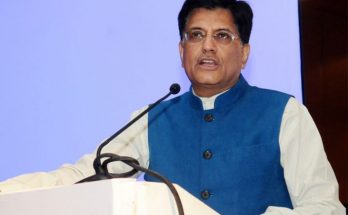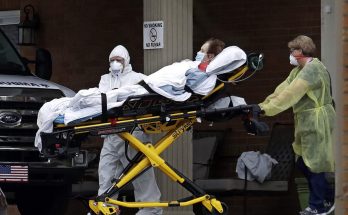Battling a spate of corruption charges and a serious image deficit in the past four years, the Congress-led United Progressive Alliance (UPA) has completed its nine years in office, but the overwhelming question is whether it will be able to return to power in the 2014 general elections.
To mark the fourth anniversary of the UPA II, Prime Minister Manmohan Singh is expected to present a report card of the government, which is essentially a feel-good exercise in trumpeting myriad achievements, with an eye on the elections next year.
Appraisal Report
A look back at the past four years indicates that though the UPA started off with a sense of achievement in 2009, it appears wounded in the run up to the next electoral battle. For most part of the second innings of the UPA, the government was fire fighting the charges of corruption related to the Commonwealth Games, 2G spectrum and coal blocks allocation, all committed during its first outing in power. Even the Mr. Clean image of the prime minister, who took office in 2004 and again in 2009, appears to have been tarnished, especially after the recent exit of two tainted ministers considered close to him.
In fact, India’s chief opposition, the Bharatiya Janata Party (BJP), did not allow the budget session of parliament, which ended May 8, to function till the prime minister and his two ministers resigned. The blockade of parliament by an aggressive opposition has been the norm in the past few years even as the ruling alliance appeared to be hurtling from one crisis to another.
Manmohan Singh: Nine years at the helm
For Manmohan Singh, who completes nine years in office May 22, it’s a milestone of sorts as he has become the longest serving prime minister outside the Nehru-Gandhi family. But the bureaucrat-turned-politician may not be too happy with many things, including the way the second generation economic reforms are going and the play of governance in the country.
Manmohan Singh was the surprise choice of Congress president Sonia Gandhi, who declined to head the government when the party came to power in 2004. Singh is credited with ushering in path-breaking reforms in his former role as finance minister that opened up the Indian economy in 1991.
At the end of the five years of UPA I, which saw both high economic growth and the slowing down of the economy under the pressure of the 2008 global economic crisis, Manmohan Singh was chosen again for the top job in 2009, especially after he risked his government in 2008 to pursue a landmark civil nuclear deal with the US. Sonia Gandhi, the head of the ruling coalition and the wife of former prime minister Rajiv Gandhi, has, however, continued to back him.
In the hope that the new government would continue the reforms, the voters gave the Congress an increased tally in the Lok Sabha, up from 145 in 2004 to 206 in 2009. But uncontrollable high prices of food items, corruption scandals and perceived policy paralysis has marked the reign of the UPA II, giving the voters a sense there was a lack of governance at the centre.
Gauging Public Mood
Given large-scale public dissatisfaction especially in urban areas, political analysts say that repeating 2009 appears to be next to impossible for the Congress in 2014.
A pointer is the UPA II appears to be weaker as two of its key allies, Trinamool Congress and the DMK, have left it in the past nine months, reducing the alliance to a minority in parliament and increased its dependence on the unpredictable Samajwadi Party (SP) and Bahujan Samaj Party (BSP).
However, it has not been unremittingly bleak for the UPA II. On the contrary, it can legitimately flaunt some achievements. While the UPA I was able to pass landmark legislations like the Right To Information Act and launch the rural job plan, Mahatma Gandhi National Rural Employment Guarantee Scheme, the UPA II passed the Right to Education Act, which allows free and compulsory education for all children aged 6-14 years, and saw key policy initiatives like the Direct Benefits Transfer scheme and allowing FDI in multi-brand retail and insurance.
The ambitious food security and land acquisition bills, which the UPA would like to showcase in the 2014 polls, have been introduced in parliament but are yet to be passed. The food security bill was a promise in the Congress manifesto in 2009. Funding for the social welfare schemes was also enhanced during UPA II.
In 2011, hit by Anna Hazare’s anti-corruption movement, the government passed the anti-graft Lokpal bill in the Lok Sabha, which got stuck in the Rajya Sabha (upper House).
BJP hits back
The BJP is in no mood to spare the government. The opposition party has attacked the UPA, saying it has failed on all fronts during the past nine years.
Sushma Swaraj, a senior BJP leader and Leader of Opposition in the Lok Sabha, accused the UPA of leadership deficit. “Manmohan Singh is a PM but not a leader either of the party or the country. UPA allies sit with the PM to discuss problems but look up to UPA chairperson (Sonia Gandhi) for solutions,” she said while dubbing the UPA a failure.
High Hopes
Congress leaders have held firm that the people would appreciate the work done by the government and bring it back to power. But that may be a fond hope. A series of opinion polls released on the eve of the fourth anniversary of UPA-II will hardly lift the spirits of the powers-that-be in the ruling coalition.
Headlines Today-CVoter opinion poll predict that the UPA’s tally was set to plummet by 95 in the 2014 Lok Sabha elections. In the same breath, it added that the biggest surprise was that the UPA’s loss is not automatically translating into major gains for the BJP-led National Democratic Alliance (NDA). “The lion’s share of the seats would, in fact, be cornered by smaller parties which have not yet disclosed their cards. While this alternative front looks set to bag as many as 68 more seats, the NDA might just add 27 more seats to its 2009 tally,” it said.
CNN-IBN Urban India opinion poll showed that people were largely dissatisfied with the UPA-II government and were in no mood to give it another term to rule. “Among the respondents more than half (56 percent) are dissatisfied with the present term of the UPA government. Two-thirds of the respondents (67 percent) feel that the government has lost its credibility,” the CNN-IBN said in a statement.




